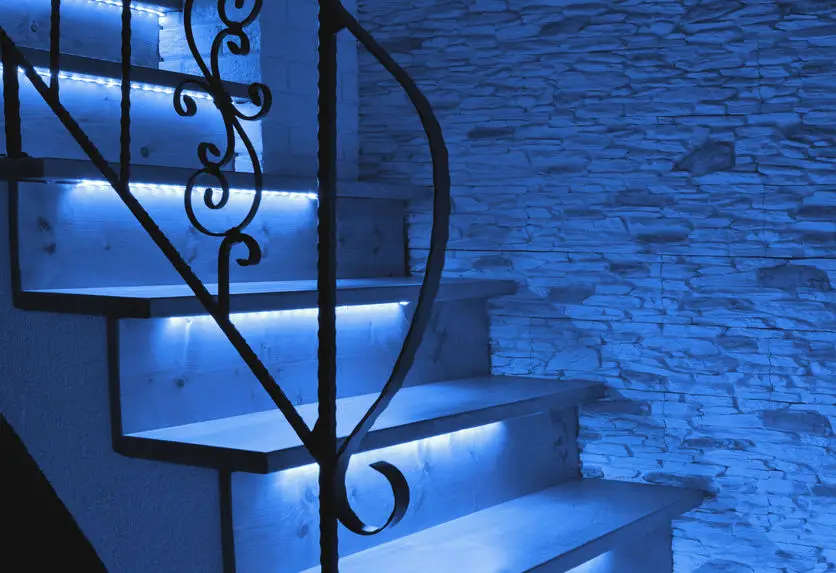do led light strips use a lot of electricity
LED strips have become increasingly popular in recent years due to their versatility and energy efficiency. Not only do they provide a stunning visual effect, but they also consume minimal electricity compared to traditional lighting options. If you are considering installing LED strip lights in your home, you may be wondering how much electricity they actually use. Let's explore this topic in detail.
Understanding LED Strip Lights

LED strip lights are a type of lighting solution that consists of multiple LED chips mounted on a flexible circuit board. They are designed to be versatile, allowing you to cut and customize them to fit your desired length. LED strips are commonly used for various applications, including home decor, accent lighting, and even task lighting.
One of the main advantages of LED strip lights is their low energy consumption. LEDs are renowned for their energy efficiency, and LED strips are no exception. Compared to traditional incandescent or fluorescent lights, LED strips use significantly less electricity to produce the same amount of light. This makes them an excellent option for homeowners looking to reduce their energy bills without compromising on aesthetics.
The Power Consumption of LED Strips
The power consumption of LED strip lights depends on various factors, including their length, brightness levels, and usage duration. Generally, LED strips consume between 2 to 4 watts of electricity per foot. This means that for a 10-foot strip, the power consumption would range from 20 to 40 watts. However, it's important to note that these figures may vary depending on the specific brand and model of LED strip lights.
The brightness level of the LED strip can also impact its power consumption. If you prefer brighter lighting, it will consume slightly more electricity compared to a dimmer setting. However, even the brightest LED strip lights consume significantly less energy than traditional lighting options.
Moreover, LED strips are designed to be highly efficient, converting a larger proportion of electrical energy into usable light. In contrast, incandescent bulbs produce a significant amount of heat, resulting in wasted energy. LED strips generate minimal heat, making them even more energy-efficient and helping to reduce cooling costs in warm climates.
Calculating the Electricity Usage
To determine the electricity usage of your LED strip lights accurately, you need to consider the length of the strip, its power rating, and the number of hours it operates per day. Here's a simple formula you can use:
Total Energy Consumption (kWh) = Power Rating (kW) x Operating Hours (h)
Let's suppose you have a 15-foot LED strip with a power rating of 30 watts. If you run this LED strip for an average of 4 hours per day, the calculation would be as follows:
Total Energy Consumption (kWh) = 0.03 kW x 4 h = 0.12 kWh per day
This means that your LED strip lights would consume approximately 0.12 kilowatt-hours of electricity per day. To estimate your monthly or annual consumption, you can multiply this value by the number of days in the respective period.
Tips for Energy Savings

While LED strip lights are already energy-efficient, there are a few additional steps you can take to maximize your energy savings:
- Choose the Right Brightness Level: Opt for a brightness level that meets your requirements without being excessively bright, as higher brightness consumes more electricity.
- Turn Off When Not in Use: Make it a habit to switch off the LED strip lights when they are not needed, especially during the daytime or when you're not in the room.
- Invest in Smart Controls: Consider using smart controls or timers that allow you to automate the operation of your LED strip lights. This way, you can schedule them to turn on and off at specific times, ensuring they are only in use when required.
- Regular Maintenance: Keep your LED strip lights clean and free from dust or debris. Over time, accumulated dust can dim their brightness or cause them to consume slightly more electricity.
By incorporating these energy-saving tips into your LED strip lighting setup, you can ensure that you are getting the most out of their efficiency while minimizing unnecessary electricity usage.
In Conclusion
LED strip lights are an excellent choice for both decorative and functional lighting purposes. Not only do they offer endless possibilities for customization, but they also consume minimal electricity compared to traditional lighting options. Their low power consumption, coupled with their long lifespan and durability, makes them an eco-friendly and cost-effective choice for homeowners.
When installing LED strip lights, remember to consider the length, power rating, and operating hours to accurately estimate their electricity usage. By following energy-saving tips such as choosing the right brightness level, turning off when not in use, and investing in smart controls, you can further reduce your energy consumption while enjoying the stunning illumination provided by LED strip lights.


Post a Comment for "do led light strips use a lot of electricity"
Post a Comment